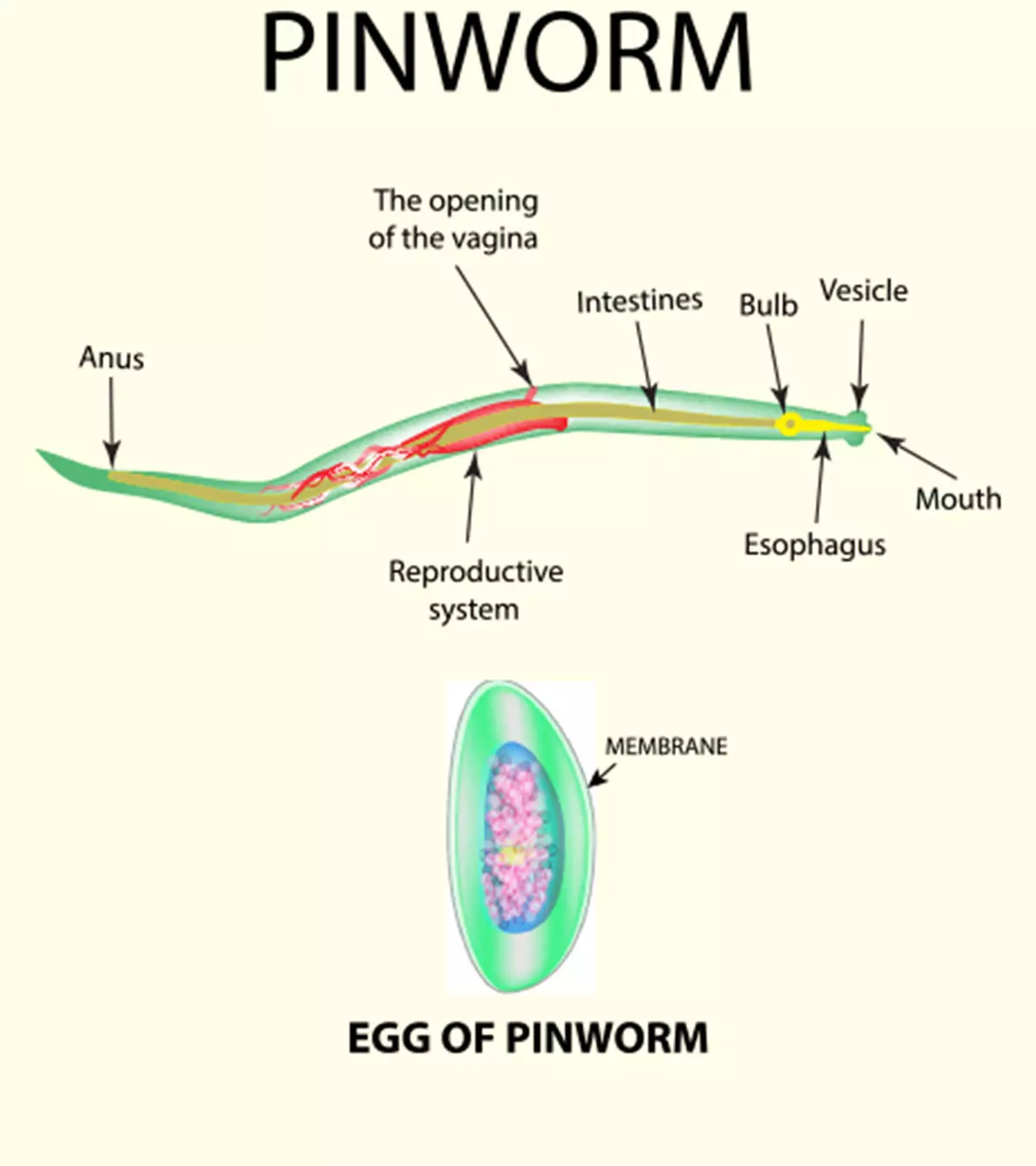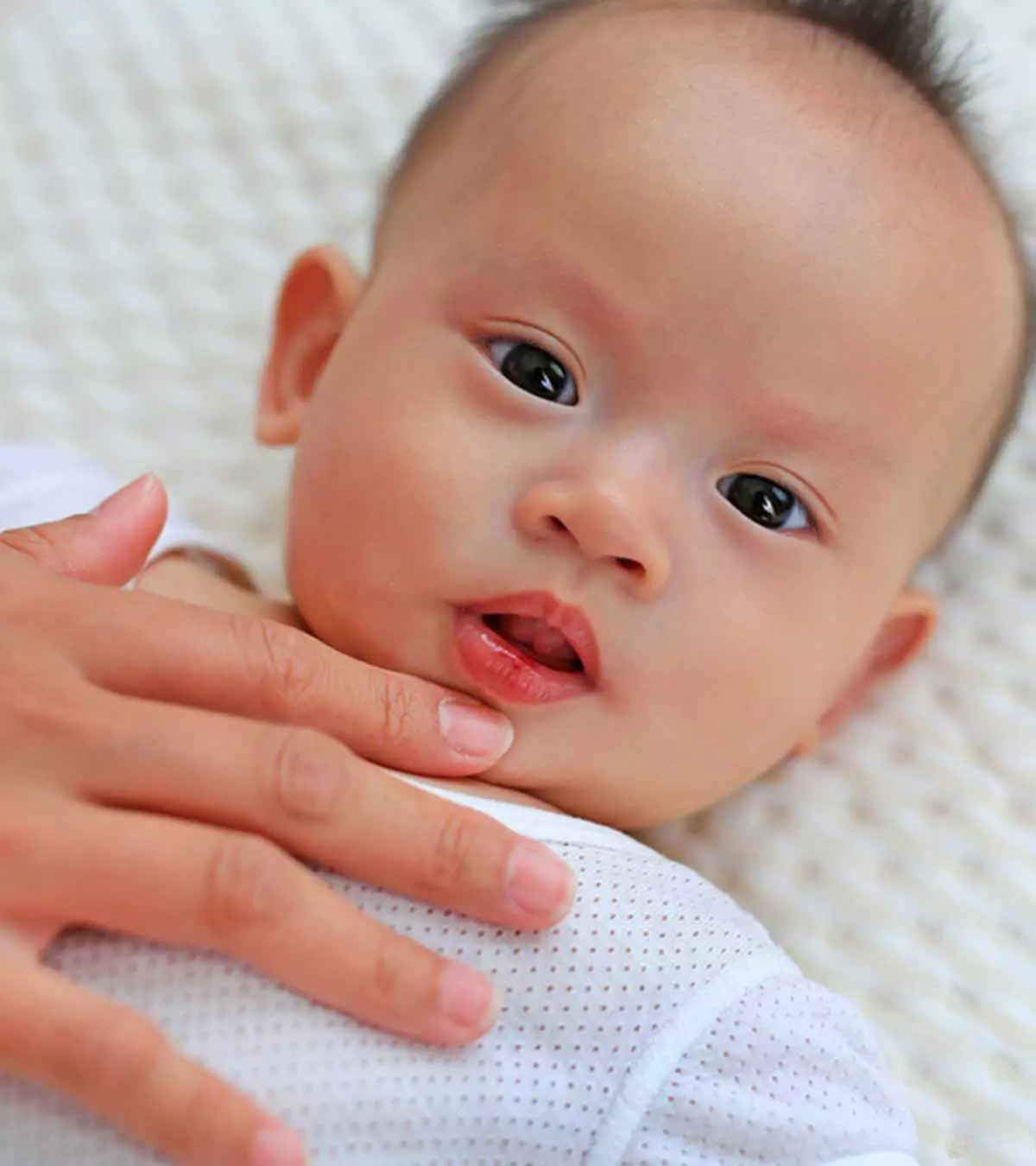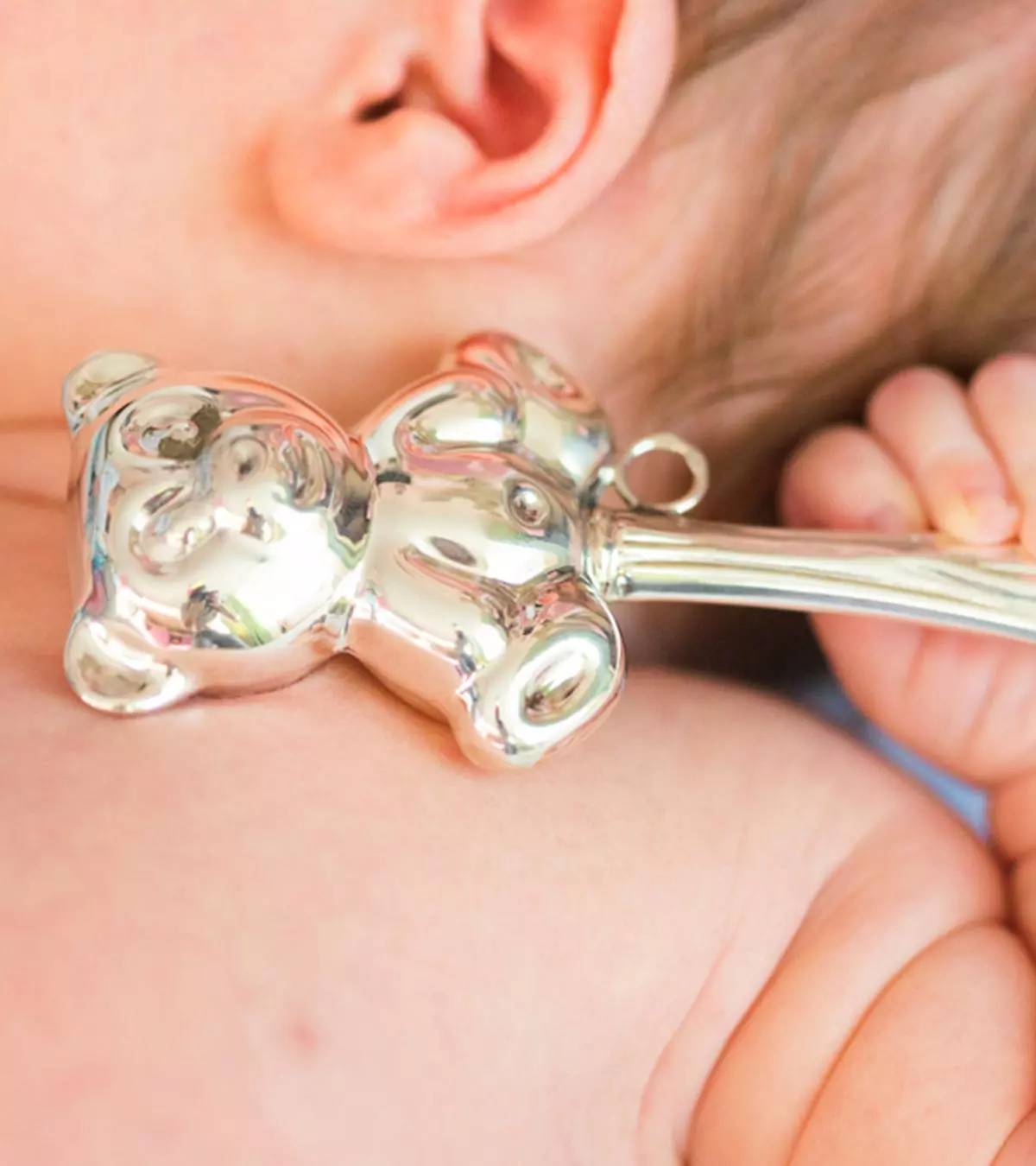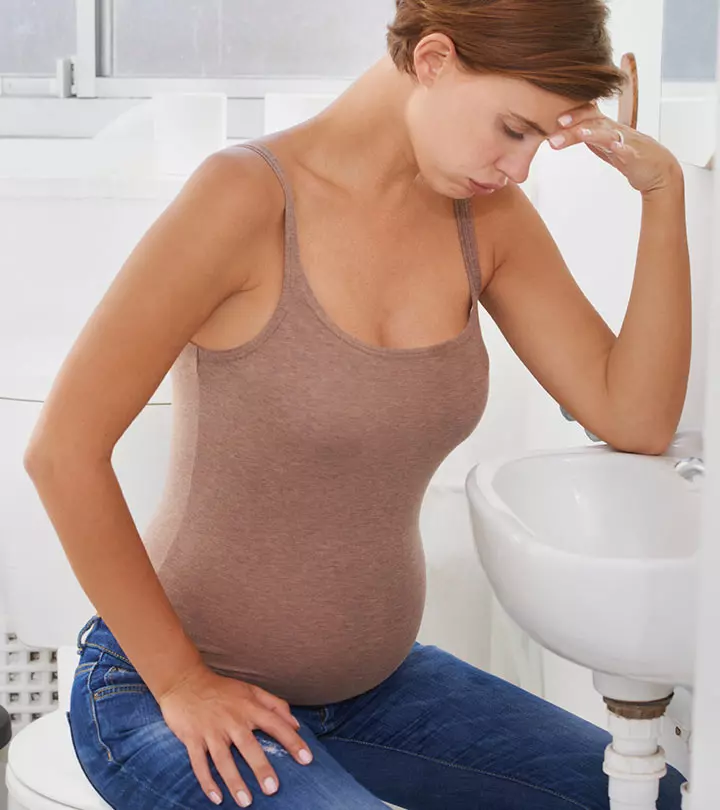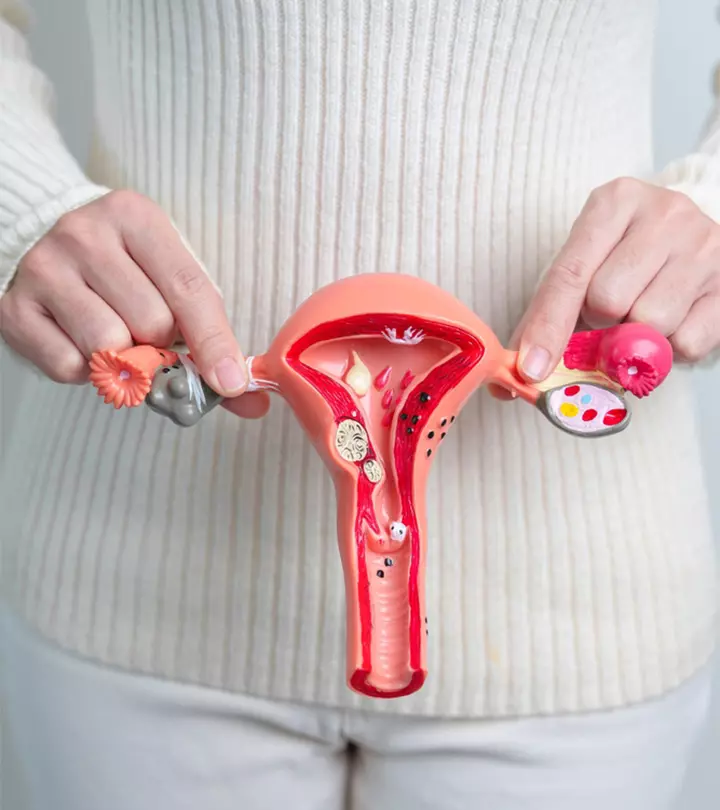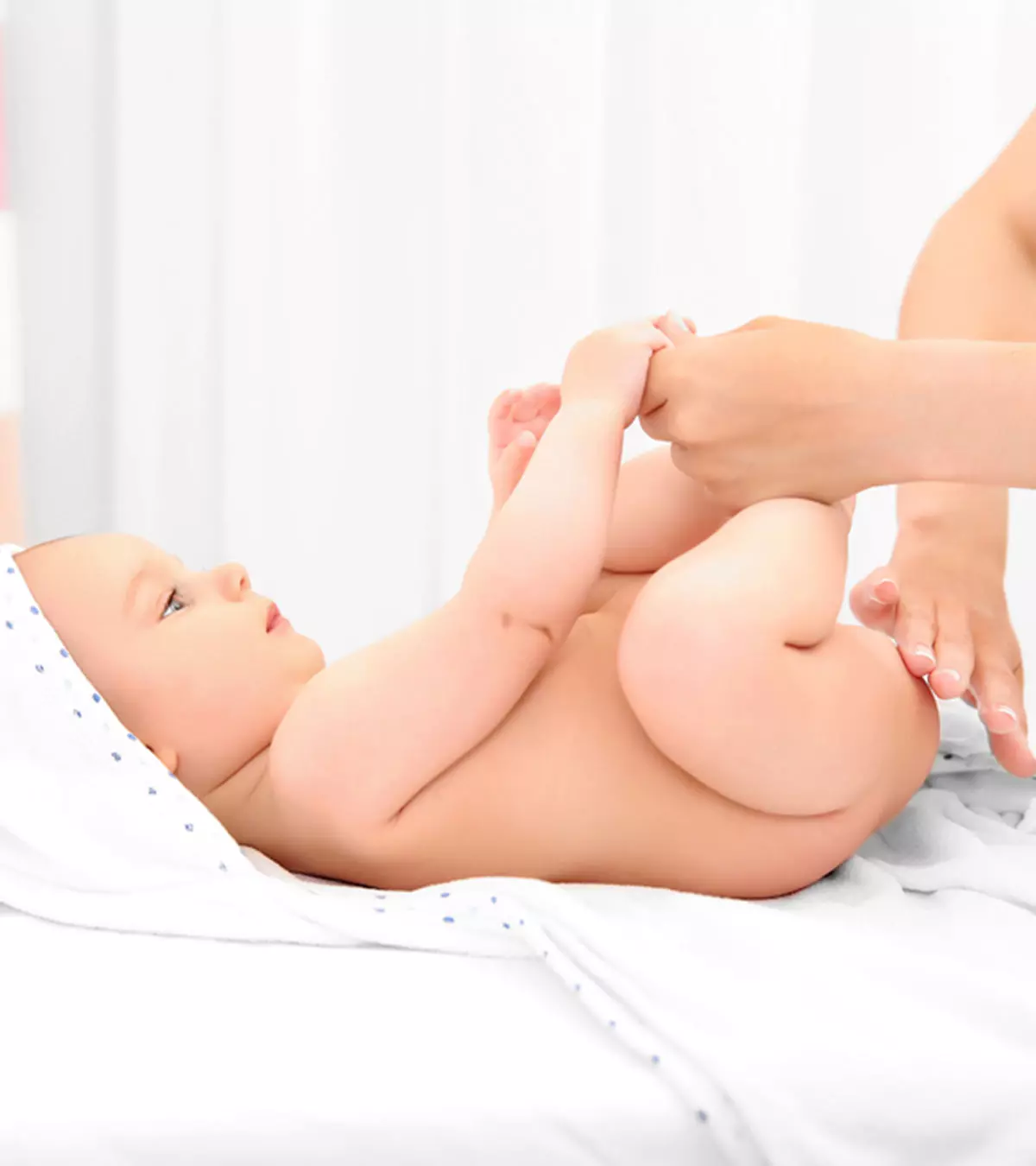
Image: iStock
Cesarean section or C-section is a major invasive procedure done to deliver a baby. It is recommended to avoid strenuous activities, including driving, for at least 42-45 days after C-section delivery (1). You may follow adequate postoperative care to promote wound healing and recovery.
Although experts advise limiting strenuous activities, doing gentle activities and staying mobile for better outcomes is advised. Read this post to learn about the safety of driving after a Cesarean section and the precautions one should take.
Key Pointers
- You can drive after a C-section once you finish your course of analgesics.
- Ensure to take medical approval before you start driving, and preferably, drive a car with the seat at a level that’s comfortable for ingress and egress.
- Before you start driving, check with the doctor if the surgery or medication could affect your attentiveness.
When Can You Start Driving After Delivery?

There is no research-based evidence recommending how soon one can drive after a C section, but it is advised to wait until finishing the course of analgesicsiMedications used to relieve various kinds of pain in the body and feel comfortable and confident to drive (2). It is usually best to exercise caution and follow your doctor’s orders. They will recommend when to resume driving by examining your postnataliThe period immediately following childbirth and can last up to 6 to 8 weeks health status, the healing process, and other medical conditions for maximum driving safety.
The following are general recommendations for driving after childbirth.
- C-section: You may have to wait until six weeks before starting to drive postpartum, as during this time, your body and C-section stitches would heal (1).
- Vaginal birthiThe process through which a baby is delivered naturally from the mother's vagina : You may wait for at least one to two weeks before starting to drive (3).
 Experts say
Experts sayWhy Is It Difficult To Drive After C-Section?

If you are wondering about ‘When can I drive after c section,’ here’s the answer. C-section is a complex surgical procedure. Most women who undergo this surgery experience pain, bleeding, and abdominal discomfort for the first few days after surgery. For some, the pain in the abdominal incision region lasts for several weeks (1). Therefore, women may feel uncomfortable driving for the first few weeks after C-section.
Driving requires a person to operate several functions, such as changing gears swiftly and applying an emergency brake, which may be compromised by pain or movement restrictions due to C-section. In addition, other important factors, such as post surgery fatigue also due to lack of sleep while nursing a newborn, the effect of pain-relieving medications, surgical considerations (such as type of incision and surgery), other underlying conditions (such as diabetes or depression), may make it hard for a woman to drive post a C-section (4).
 Point to consider
Point to considerAre There Any Legal Obligations For Driving After C-section?
It is advisable to take medical advice and get a thorough postnatal checkup before you start driving after surgery. You may resume driving after you get a medical clearance from your healthcare provider. If your doctor feels that your condition may affect your driving ability and mentions the same in your medical history, you should refrain from driving until an appropriate period to avoid legal issues (4). It is also worth looking into the driving restrictions set by your state and your insurance company guidelines for any policy exclusions or accident coverage terms related to driving after a C-section.
What Types Of Cars Are Better For Driving After C-Section?
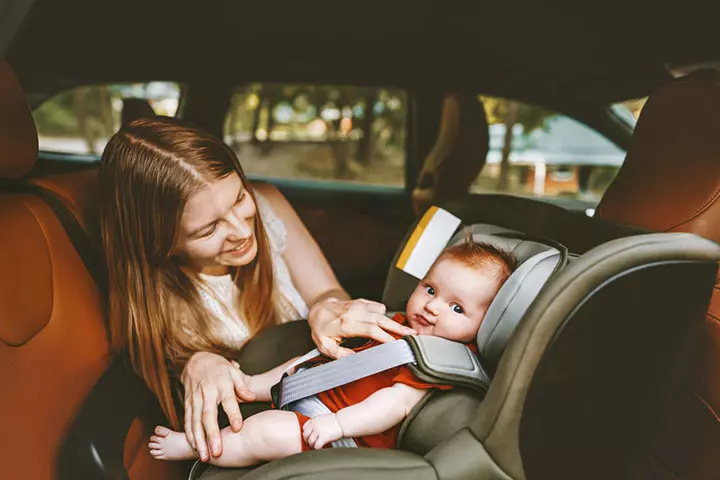
If you feel the need and are ready to start driving after a C-section, choose a vehicle where you feel comfortable pushing pedals, changing positions, turning the steering wheel, and looking back for reversing (5). It is ideal to select a car with a seat at a level comfortable for ingress and egress. You may consider an automatic car that does not require you to operate the clutch, reducing the strain further. If you plan to travel with your baby, ensure you have a well-installed child restraint system (car seat) placed as per the safety guidelines and car’s ergonomics (6).
What Are The Precautionary Measures For Driving After C-Section?
Now that you know from when can you drive after c-section, let us look at the precautions to take. You may be asked to refrain from driving after a C-section for a certain time, depending on your condition and recovery. However, you must have a few facts checked and take necessary measures for your safety if you plan to initiate driving after a C-section (7).
- Get a postnatal checkup done before you start driving.
- Ask your doctor about your recovery status, driving readiness, and after-effects of the surgery or medicines that could affect your alertness while driving.
- Assess whether you can sit comfortably in a car, wear the seatbelt, and work on the controls such as gear, clutch, and accelerators.

- Consider taking a short drive at slow speeds with a family member who knows how to drive. Check if you have any discomfort or pain while looking around, looking backward, or performing an emergency halt.
- Stop the vehicle at a safe spot if you feel discomfort or dizzy, or have to attend to the baby traveling with you. Take a break until you feel better or have attended to the baby.

- Do not continue driving if you are on narcotic pain medicine or feel weak or any pain while driving (8).
Women are advised to avoid driving after a c-section for about a minimum period of six weeks. This is done to allow the incision wound to heal correctly and reduce the risks of the stitches coming off due to some strenuous activityiActivities that require putting a lot of effort and energy and infections. Therefore, it is considered safe to consult your doctor before making any decisions. Follow the precautions mentioned in this post before getting back to driving after you have had a c-section to ensure your safety. Also, remember that you should only get back to it when you are confident about your condition and health.
Frequently Asked Questions
1. Which positions should I avoid while driving following a C-section?
You should not include any physical activity that puts weight or strain on the abdominal muscle causing it to stretch or crunch. Therefore, it is better to avoid positions involving bending or lifting. Instead, opt for a comfortable position to reach the controls without straining the abdominal muscles (4).
2. What are the signs that I’m not ready to drive after a C-section?
Signs such as fatigue, restricted movement, sharp pain in the abdomen, discomfort or drowsiness from intake of painkillers, fever, unusual swelling, and inability to do daily activities comfortably indicate that you are not ready to drive after the C-section (4).
3. How can a woman know if she is physically able to drive after a C-section?
Signs of recovery for a woman after a C-section include the wound becoming a scar and effective control of pain by painkillers. Light mobility and gentle activities can be started after a 6-week postnatal checkup with the general practitioner. The consultation may provide information on whether you can resume driving (1).
4. Can driving too soon after a C-section affect a woman’s ability to breastfeed or care for her baby?
There is limited evidence to study the effect of driving soon after a C-section on breastfeeding or baby care. The method of delivering a baby has minimal impact on the milk supply. If you are experiencing breastfeeding difficulties, contact a lactation specialist for prompt advice (10).
5. Are there any exercises or stretches that can help a woman prepare for driving after a C-section?
Once the incision wound has healed completely, a mother can consider starting exercises or stretches to regain muscle strength and endurance. However, it is important to consult with a doctor first and then start with light exercises.
Infographic: Driving After Cesarean Delivery: Drive Well And Safe
After a cesarean delivery, you need to allow yourself ample time to recover before resuming to drive. This infographic brings some useful safety measures to remember before you decide to drive a car post a cesarean delivery. Illustration: Momjunction Design Team
Illustration: Driving After C-Section: When To Start & Precautions To Take
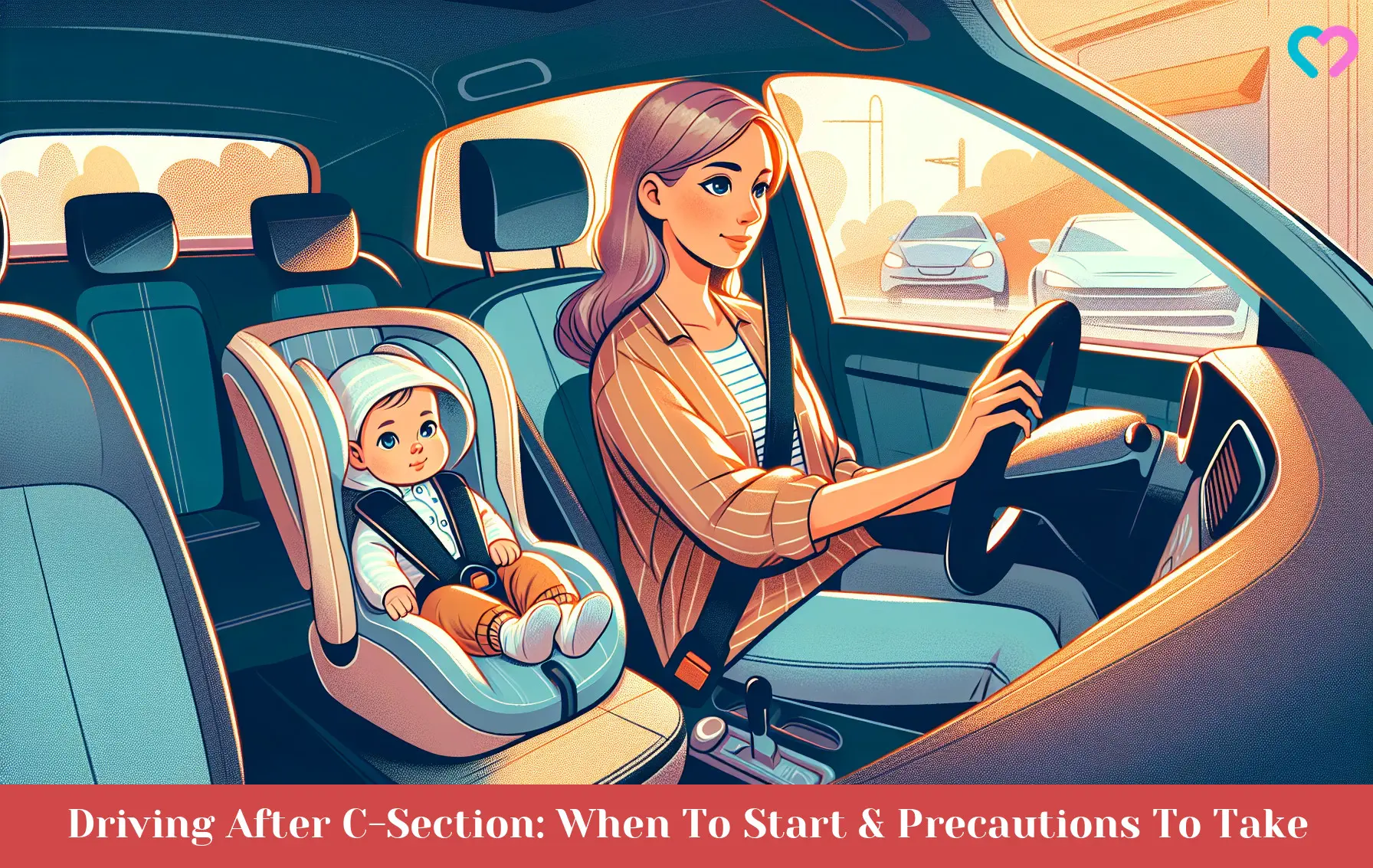
Image: Dall·E/MomJunction Design Team
References
- Recovery-Caesarean section.
https://www.nhs.uk/conditions/caesarean-section/recovery/ - Lucas Minig, et al., Building the evidence base for postoperative and postpartum advice.
https://pubmed.ncbi.nlm.nih.gov/19888050/ - Postpartum Discharge Instructions.
https://www.hopkinsmedicine.org/health/wellness-and-prevention/postpartum-mood-disorders-what-new-moms-need-to-know - Driving after abdominal surgery including caesarean section.
https://ranzcog.edu.au/wp-content/uploads/Driving-After-Abdominal-Surgery-Including-Caesarean-Section.pdf
- Your Caesarean birth and recovery.
https://www.kemh.health.wa.gov.au/~/media/Files/Hospitals/WNHS/For-Patients-and-Visitors/Patient-resources/NMHS011YourCaesareanBirthAndRecovery.pdf - At what point is it safe to drive or ride in a car again after having your baby?
https://www.fundacionmapfre.org/en/education-outreach/road-safety/child-restraint-systems/ - Driving after gynaecological surgery and Caesarean-section delivery.
https://thepogp.co.uk/_userfiles/pages/files/gps_pgs_dr_05.pdf - Going home after a C-section.
https://medlineplus.gov/ency/patientinstructions/000624.htm - Miscellaneous conditions: assessing fitness to drive.
https://www.gov.uk/guidance/miscellaneous-conditions-assessing-fitness-to-drive#driving-after-surgery - Breastfeeding After Cesarean Delivery
https://www.healthychildren.org/English/ages-stages/baby/breastfeeding/Pages/Breastfeeding-After-Cesarean-Delivery.aspx
- Recovery-Caesarean section.
Community Experiences
Join the conversation and become a part of our nurturing community! Share your stories, experiences, and insights to connect with fellow parents.
Read full bio of Dr Esha Chainani
Read full bio of Vidya Tadapatri
Read full bio of Rebecca Malachi
Read full bio of Dr. Joyani Das






